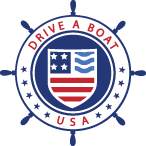PFD Types and Designs
Life jackets, also called Personal Flotation Devices (PFDs), save lives. According to the United States Coast Guard, more than three quarters of all drowning victims were not wearing a PFD at the time of their deaths.
To stay safe on the water, boaters of all ages need to wear a life jacket, no matter how good they are at swimming or how close they are to shore. Many people aren’t aware that life jackets not only protect people from drowning, they are also effective in preventing cold water shock.
Every life jacket on a boat or being worn has to be the right size and type for the person wearing it, and designed for the specific conditions where it is being used. Drive A Boat USA is your source for up-to-date information about what this means.
First, we’ll take a look at five traditional types of life jackets. While many life jackets that are already in circulation may fall into one of these categories, keep in mind that labels identifying these Types are being gradually phased out. At the end of the article, we’ll explain the new labels and how you can use them to choose the right PFD to keep you and your loved ones happy and safe on the water.
Older labels: 5 types of PFD
If you have already purchased a life jacket, it may have a label that indicates its “type”. There is no problem using a PFD with an older label, as long as you verify that the equipment is still in good working condition. Confirm that all elements of the life jacket are functional, including zippers, straps and buckles, and that there are no tears in the fabric.
Type 1 PFD: Offshore life jacket
Type 1 offshore life jackets provide the most buoyancy (ability to float) of any type of PFD. They are effective everywhere, but especially on open, rough or remote waters where rescue may be delayed. Common uses include cruising, racing, and fishing offshore, or when boating alone or in stormy conditions.
Although they are large and awkward, which makes them difficult to swim in, type 1 life jackets have the advantage of being designed to turn an unconscious wearer face-up in the water.
Type 1 life jackets come in two sizes:
- Adult size: at least 22 pounds of buoyancy
- Child size: at least 11 pounds of buoyancy
Type 2 PFD: Near-shore life jacket
Type 2 near-shore life jackets are intended for use on calm, inland waters where there is a good chance of quick rescue. Common uses include inland day cruising, fishing and sailing. Overall, they are good for boating in light craft. If you are unsure what type of life jacket you need for your specific type of boat, take a moment to learn more about boat sizes and classifications.
Although a type 2 PFD may turn an unconscious wearer face-up, this is not guaranteed. In rougher water, users will likely need to tread water to keep their head above the waterline.
Type 2 life jackets come in three sizes:
- Adult size: at least 15.5 pounds of buoyancy
- Medium child size: at least 11 pounds of buoyancy
- Infant and small child size: 7 pounds of buoyancy
Type 3 PFD: Flotation aids
Type 3 personal flotation devices are good for calm inland water, or any area where a person can easily and quickly be rescued.
This type of PFD will not turn an unconscious user face-up in the water, and wearers may have to tilt their head back to avoid turning face-down. Some type 3 PFDs will even require inflation once in the water. Float coats, fishing vests and water sport vests are all examples of type 3 PFDs.
Type 3 life jackets offer roughly the same buoyancy as vests in the type 2 category.
Type 4 PFD: Throwable devices
Type 4 personal flotation devices are intended for calm, inland water where there is heavy boat traffic, meaning that help is readily available.
This category of PFD includes buoyant boat cushions, ring buoys and horseshoe buoys. Type 4 PFDs are objects that can be thrown to a person in the water, where they can cling to it until rescued. They do not include any devices that can be worn, and they are not suitable for unconscious users, non-swimmers or children.
Type 4 PFDs must be immediately available for use and never tucked away in a compartment onboard.
The minimum buoyancy for type 4 PFDs is 16.5 lbs for a ring buoy and 18 lbs for a boat cushion.
Type 5 PFD: Special use devices
Type 5 PFDs are made for special uses, such as water sports like kayaking, waterskiing and windsurfing. They can only be used under the conditions specified on the label. Some type 5 PFDs are specifically designed for cooler conditions and aid in preventing hypothermia.
Type 5 PFDs are the least bulky type of life jacket. There are several varieties, including automatic inflation and hybrid inflation models which are designed to inflate on entering the water. Examples of type 5 PFDs include deck suits, paddling vests, commercial white-water vests and work vests. They are not necessarily designed to protect unconscious users.
Minimum buoyancy for type 5 PFDs varies according to the type of device. Type 5 PFDs must be worn when underway to meet USCG requirements (they cannot simply be kept on board).
Newer labels: 2 types of PFD
In 2014, the Coast Guard made an announcement regarding a change in the labeling of PFDs. This change aimed to align US regulations with Canadian standards. The new PFD labeling system is now being introduced in the marketplace as the older Type I-V PFD labels are being phased out.
Newer labels divide PFDs into two main categories: wearable and throwable.
Type 1 PFD: Wearable
The new labels on wearable PFDs, or life jackets, indicate the following:
- How much buoyancy they offer
- What size person they will protect
- Whether they will turn a person on their back if unconscious
- Which water activities they can and cannot be used for
The labels are aligned with both American and Canadian standards, and they no longer indicate Type.
Buoyancy
Using international symbols adopted from the the International Standards Organization (ISO) sub-committee for life jacket standards, the new labels indicate five different levels of buoyancy. Each level is indicated by a number, representing the number of Newtons of buoyancy the equipment provides. Higher numbers equal more flotation. Most life jackets on the market are level 70, and lower numbers are not USCG approved.
Size
Sizes are shown in both Metric and Imperial measurements. There is also a handy indicator of whether the life jacket is suitable for children, youth or adult users.
Turnability
A unique icon indicates whether the wearable PFD will turn the wearer onto their back if they are unconscious.
Warnings and Appropriate Uses
The numbered icons also suggest appropriate uses for each PFD. Lower level numbers generally offer more mobility and comfort, and can safely be used in calm water activities (near shore). Higher numbers generally offer more stability in the water. They are suitable for activities in rougher water, and in situations where quick rescue is less likely.
Warning icons indicate which activities you should not perform while wearing the life jacket. For more information, refer to the tag on the label, or search online.
Type 2 PFD: Throwable
Throwable PFDs include some types of boat cushions and other devices such as ring buoys. Throwable devices are never to be used by children or any person who is unable to hold onto them, or in rough waters.
Coast Guard Approval
Both old and new PFD labels should feature a Coast Guard approval number. PFDs without a USCG approval number should never be used.
Learn all about boater safety with Drive a Boat USA
Remember, a life jacket can only protect you if you wear it! And a PFD cannot compensate for other safe boating practises, such as respecting the boat capacity limits of your vessel. It is also highly recommended that all boaters take a boater safety course so that they are prepared to enjoy the water with minimal risk to themselves and others.
Contact Drive a Boat USA to get your official state-approved online boating license today!


